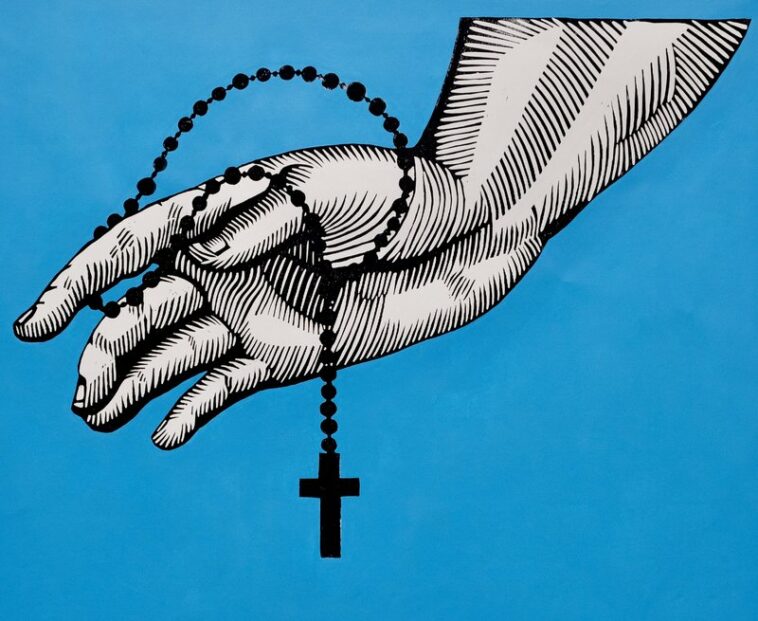Published by Uchoose by UCMC
Written by Viktor Tregubov, religious scholar, major of the Armed Forces of Ukraine
Russian aggression has left Ukrainian refugees scattered all across the globe. However, many would still like the option of visiting Orthodox churches. Wouldn’t it be nice if the service was held in the Ukrainian language and officiated by a priest unaffiliated with Patriarch Kirill of Moscow, who blesses Russians for killing Ukrainian citizens?
This is not always possible. People are often disappointed when they learn that the only Orthodox Church in Germany or France is a Russian one that has been there since the 1920s, with a priest who isn’t opposed to the war (that exact one that forced them to flee their homes). What’s worse, the priests push them to socialize with Russian emigrants, no matter how repulsive nor how gently these people promote pro-Kremlin myths about a ‘three-holy unified Rus,’ which the West has turned against.
What choice do these Ukrainians have, and is there any light at the end of this tunnel?
Let’s figure out what’s happening with Ukrainian Orthodox churches outside of Ukraine.
The debate over who should provide spiritual guidance to Orthodox Christians in countries without their own autocephalous Orthodox Church dates back to ancient times. Still, it has become especially acute since the turn of the 19th century when many Orthodox diasporas appeared worldwide. The oldest churches, particularly the Patriarchate of Constantinople, now known as the Ecumenical Patriarchate, maintain the traditional division. According to them, the Patriarchate of Alexandria claims the right to all of Africa. The Middle East is divided between the Patriarchates of Antioch and Jerusalem, and everything outside of it should be under the jurisdiction of the Ecumenical Patriarchate.
The younger churches oppose this, arguing that the Romanian Orthodox Church should serve the Romanian Diaspora in the United States and the Russian Diaspora by the Russian Orthodox Church. The latter principle, while more practical, leads to a number of splits (such as was the case, for example, with the Diaspora Russian Orthodox Church, which split into a long series of mutually hostile denominations during the twentieth century).
One of the immediate conditions for the OCU (Orthodox Church of Ukraine) to receive the Tomos was that it supported the Ecumenical Patriarchate in this matter. It should be noted that the Tomos does not refer to the “Ukrainian Orthodox Church” (ethnic principle) but to the Orthodox Church of Ukraine (state principle).
Quote:
“In addition, by this signed Patriarchal and Synodal Tomos, we recognize and proclaim the Autocephalous Church established within the territory of Ukraine as our spiritual daughter and call on all the world Orthodox Churches to recognize it as a sister and to mention it under the name’ Holy Church of Ukraine’, as one that has its see in the historic city of Kyiv, cannot appoint bishops or establish parishes outside the State; the existing ones are now subject, according to the order, to the Ecumenical Throne, which has canonical authority in the Diaspora, because the jurisdiction of this Church is limited to the territory of the Ukrainian State.”
Thus, according to the Tomos, the OCU has no authority to establish parishes outside of Ukraine’s state borders. Deviating from this rule without the permission of the Ecumenical Patriarchate looks extremely unprofessional, and it undermines the document itself.
However, we now have a situation whereby millions of Ukrainians reside abroad. In search of pastoral guidance, they visited nearby Orthodox churches or churches where services are held in, you guessed it, the Russian language. Sadly, these are frequently Russian churches.
Furthermore, undeterred by the Tomos, representatives of the Moscow Patriarchate’s UOC began establishing their own parishes in other countries. The problem with such parishes is the same as with the Moscow Patriarchate in Ukraine as a whole: there is no guarantee that any of them will not act as a source of Russian soft power in the host country.
The Ukrainian Orthodox Church had to balance the Tomos requirement and the realities of the situation. There were several alternatives. It was possible to request that the Ecumenical Patriarch send Ukrainian-speaking priests from the Ecumenical Patriarchate itself to provide pastoral care for Ukrainians (of which there is a surprising number – after all, the Ecumenical Patriarchate once joined the Ukrainian Orthodox in the United States and Canada). It was also possible to arrange for Ukrainian priests to serve temporarily abroad with the Ecumenical Bishop’s blessing.
Both approaches were used, but the second proved to be the most popular.
The OCU established a chaplaincy mission to assist the faithful outside Ukraine a year ago and began sending Ukrainian priests to serve in foreign parishes. It’s unclear to what extent this was previously agreed upon with Constantinople. In any case, the throne of Constantinople had no objections, and the Mission’s leader, Archbishop Hilarion of Rivne and Ostroh, was later received cordially on an official visit. As a result, collaboration occurred. It also occurs on the ground, where Ecumenical Patriarchate clergy assist their Ukrainian brothers.
However, it should be noted that the Russian Orthodox Church and its Ukrainian branch have significantly more financial resources. They have churches built for those fleeing Bolshevism, the Russian budget’s support, and well-established networks of “their people” in the host countries. For example, Metropolitan Sawa, the head of the Polish Autocephalous Orthodox Church, is one of these “people” in Poland. Another point is that he makes no attempt to prevent the OCU from looking after refugees who choose not to attend the Moscow church. The mood in society has shifted.
To summarize, the OCU and the Ecumenical Patriarchate’s network of priests is not yet capable of covering all flows of Ukrainian refugees in multiple countries. However, this year has seen significant progress in this area.


